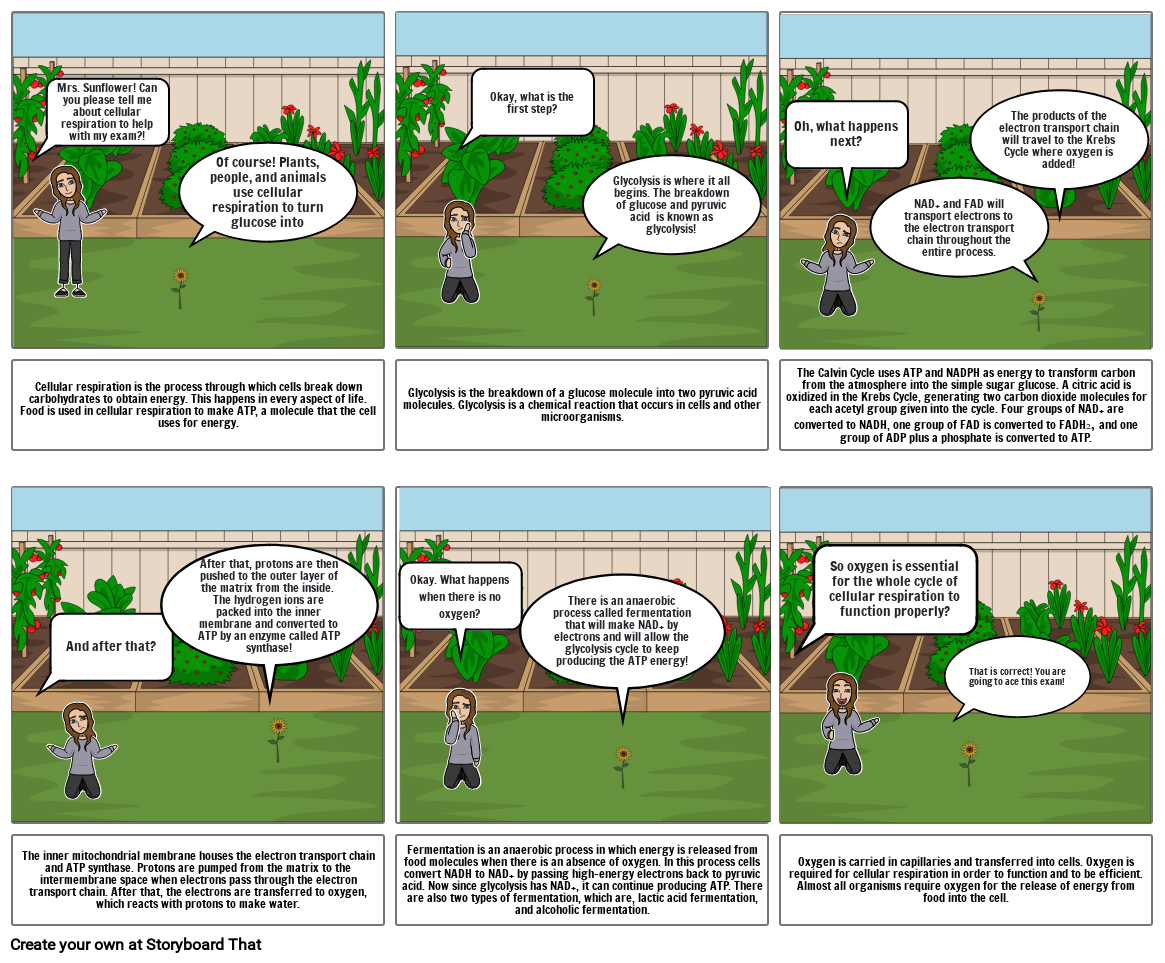Cellular Respiration Project - Nora A.

Storyboard Text
- Mrs. Sunflower! Can you please tell me about cellular respiration to help with my exam?!
- Of course! Plants, people, and animals use cellular respiration to turn glucose into energy!
- Okay, what is the first step?
- Glycolysis is where it all begins. The breakdown of glucose and pyruvic acid  is known as glycolysis!
- Oh, what happens next?
- NAD+ and FAD will transport electrons to the electron transport chain throughout the entire process.
- The products of the electron transport chain will travel to the Krebs Cycle where oxygen is added!
- Cellular respiration is the process through which cells break down carbohydrates to obtain energy. This happens in every aspect of life. Food is used in cellular respiration to make ATP, a molecule that the cell uses for energy.
- And after that?
- After that, protons are then pushed to the outer layer of the matrix from the inside.  The hydrogen ions are packed into the inner membrane and converted to ATP by an enzyme called ATP synthase!
- Glycolysis is the breakdown of a glucose molecule into two pyruvic acid molecules. Glycolysis is a chemical reaction that occurs in cells and other microorganisms.
- Okay. What happens when there is no oxygen?
- There is an anaerobic process called fermentation that will make NAD+ by electrons and will allow the glycolysis cycle to keep producing the ATP energy!
- The Calvin Cycle uses ATP and NADPH as energy to transform carbon from the atmosphere into the simple sugar glucose. A citric acid is oxidized in the Krebs Cycle, generating two carbon dioxide molecules for each acetyl group given into the cycle. Four groups of NAD+ are converted to NADH, one group of FAD is converted to FADH₂, and one group of ADP plus a phosphate is converted to ATP.
- So oxygen is essential for the whole cycle of cellular respiration to function properly?
- That is correct! You are going to ace this exam!
- The inner mitochondrial membrane houses the electron transport chain and ATP synthase. Protons are pumped from the matrix to the intermembrane space when electrons pass through the electron transport chain. After that, the electrons are transferred to oxygen, which reacts with protons to make water.
- Fermentation is an anaerobic process in which energy is released from food molecules when there is an absence of oxygen. In this process cells convert NADH to NAD+ by passing high-energy electrons back to pyruvic acid. Now since glycolysis has NAD+, it can continue producing ATP. There are also two types of fermentation, which are, lactic acid fermentation, and alcoholic fermentation.
- Oxygen is carried in capillaries and transferred into cells. Oxygen is required for cellular respiration in order to function and to be efficient. Almost all organisms require oxygen for the release of energy from food into the cell.
Over 30 Million Storyboards Created

